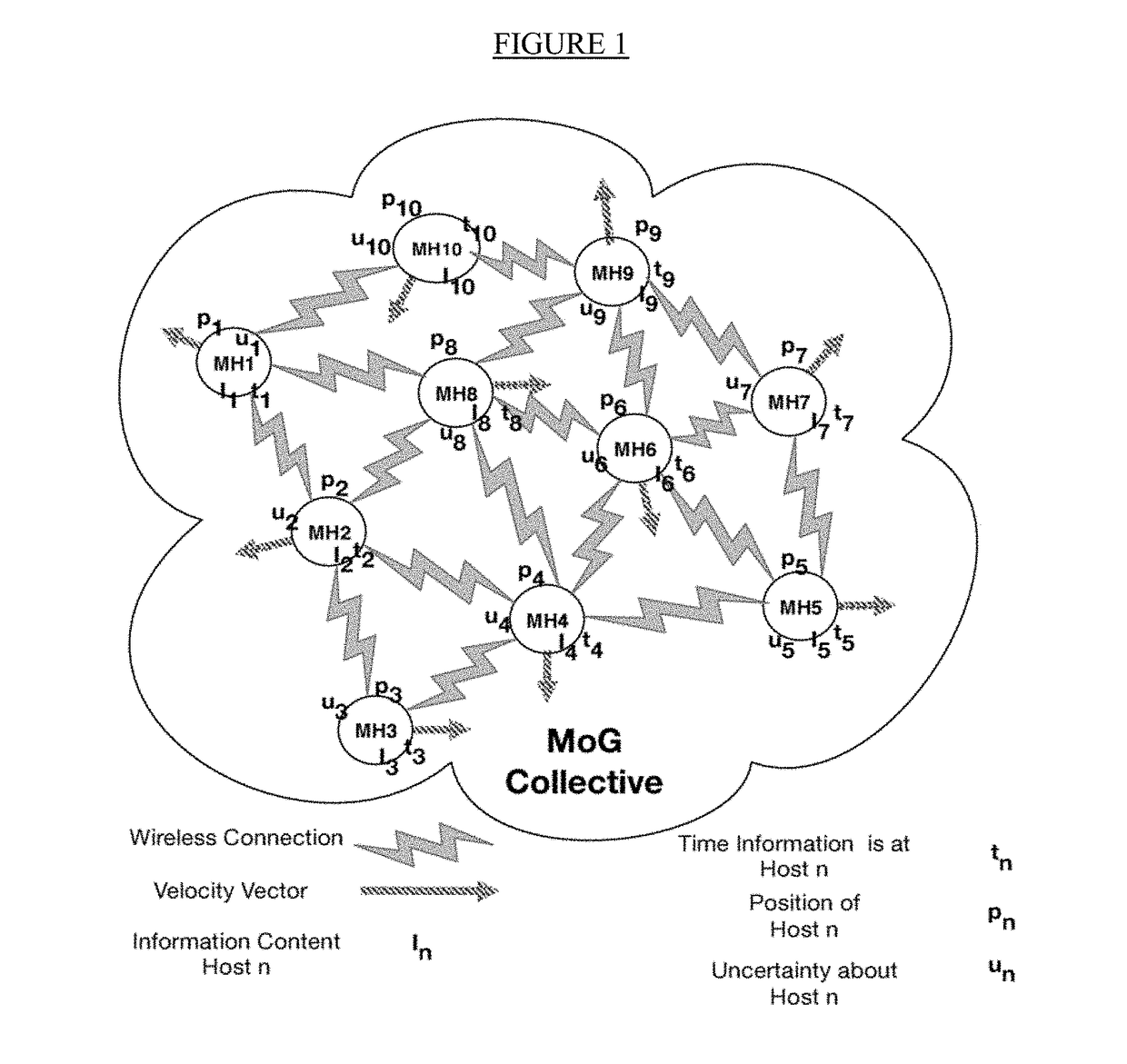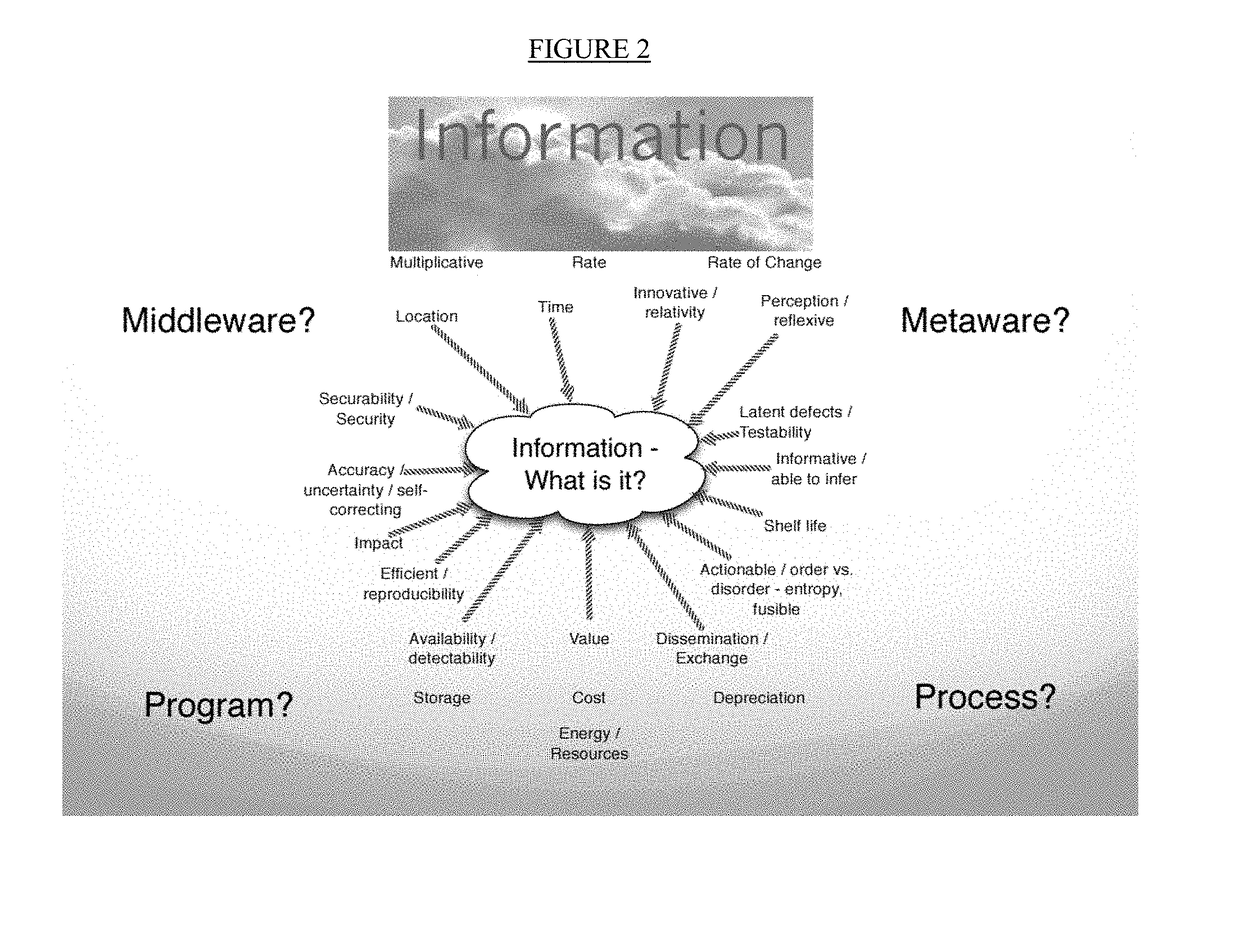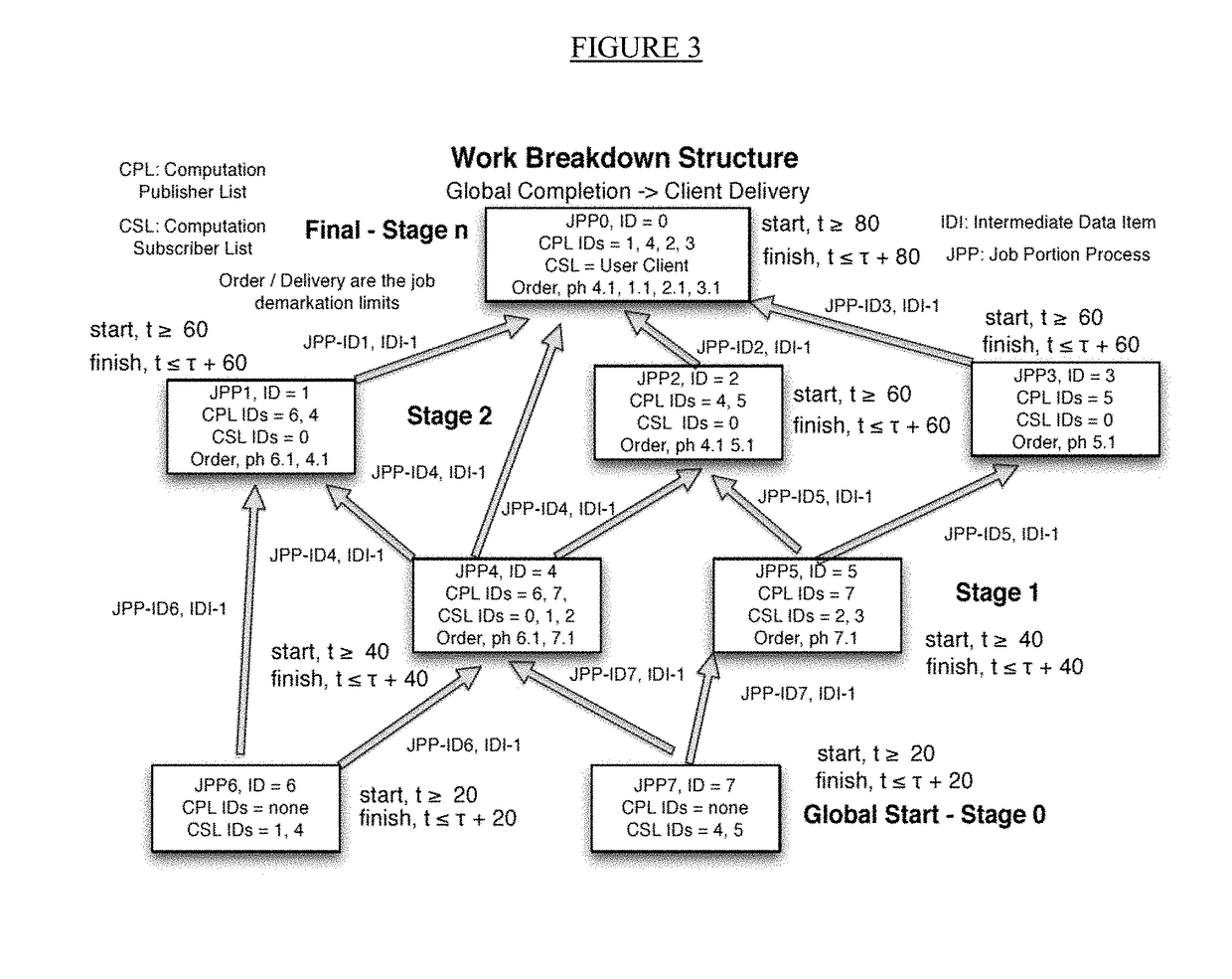Extended Mobile Gird
a mobile gird and extended technology, applied in the field of extended mobile girds, can solve the problems of overall job delay or abort altogether, performance-limiting challenges, and general limitation of computation resources to the traditional servers
- Summary
- Abstract
- Description
- Claims
- Application Information
AI Technical Summary
Benefits of technology
Problems solved by technology
Method used
Image
Examples
Embodiment Construction
[0031]The E-MoG resources and manages a wired and / or wirelessly interconnected collective of Hosts and Mobile Hosts (MHs) i.e. Nodes and Mobile Nodes (MNs) to offer novel but critically needed low-latency distributed computation-based services both in the non-mobile and / or in the mobile environments. Applicable to a wide range of use cases, these services offer local and immediate nodal collaboration on a job's distributed subtasks so as to provide computing and other mission-critical services via the node and / or mobile node devices themselves as a collective resource, instead of only offloading mobile node computation to the traditional wired services like the cloud or wired-Grid. These E-MoG services are expected not only to support casual applications, but they are expected also to scale to support mission-critical qualities of service (QoS) involving tightly-coupled low latency interactions among subtasks, i.e. where both subtask and overall job latency must be kept low.
[0032]Th...
PUM
 Login to View More
Login to View More Abstract
Description
Claims
Application Information
 Login to View More
Login to View More - R&D
- Intellectual Property
- Life Sciences
- Materials
- Tech Scout
- Unparalleled Data Quality
- Higher Quality Content
- 60% Fewer Hallucinations
Browse by: Latest US Patents, China's latest patents, Technical Efficacy Thesaurus, Application Domain, Technology Topic, Popular Technical Reports.
© 2025 PatSnap. All rights reserved.Legal|Privacy policy|Modern Slavery Act Transparency Statement|Sitemap|About US| Contact US: help@patsnap.com



